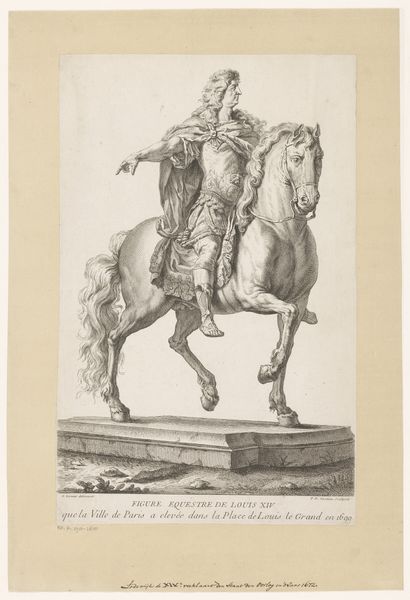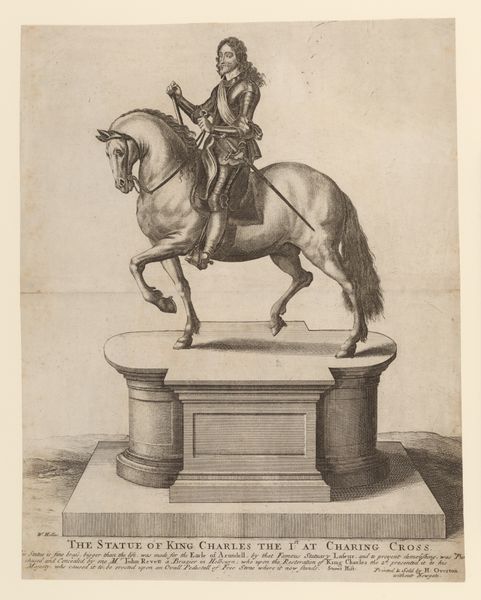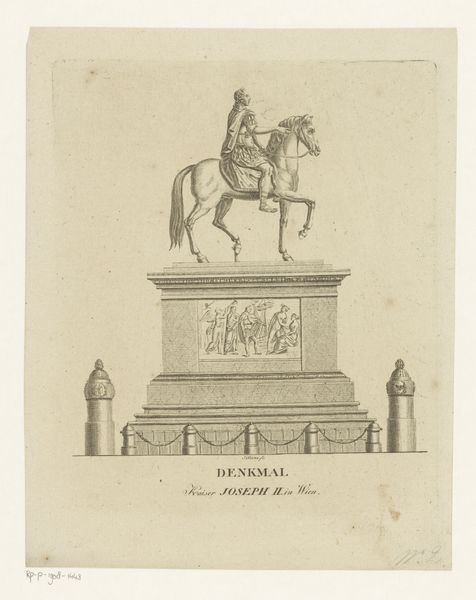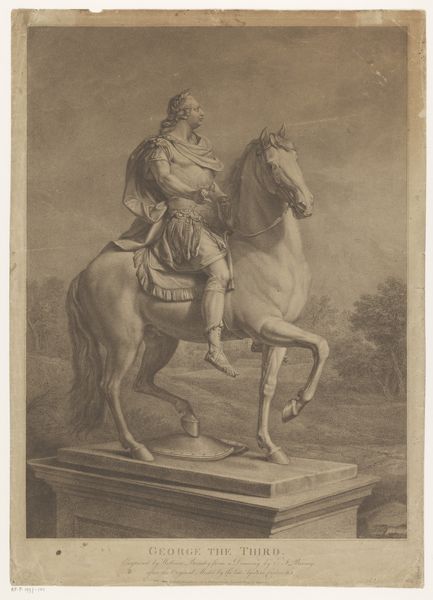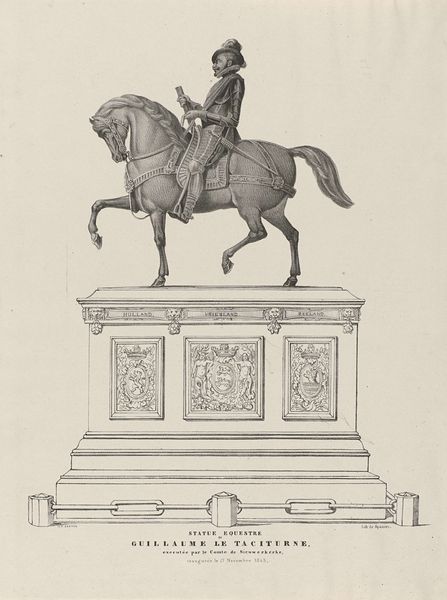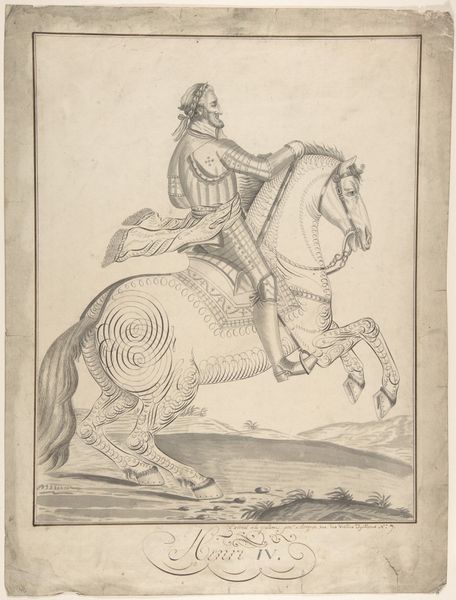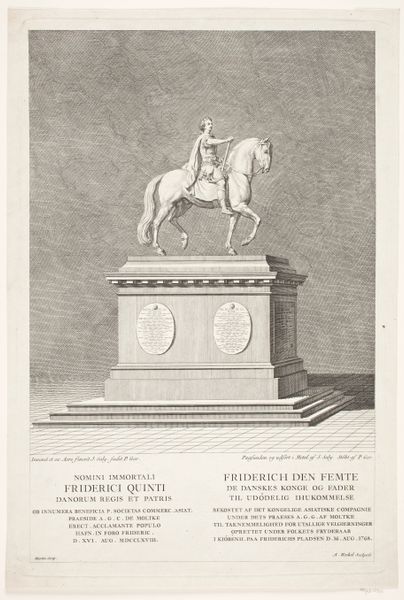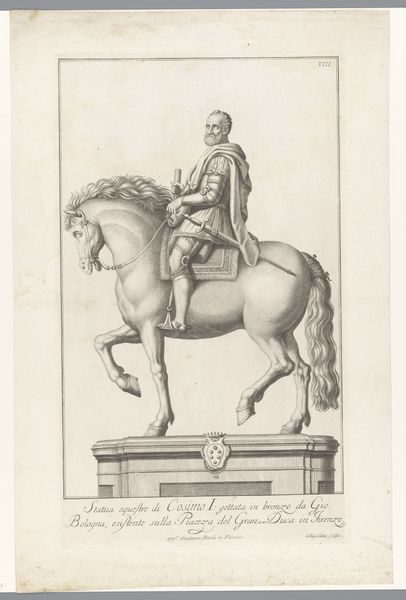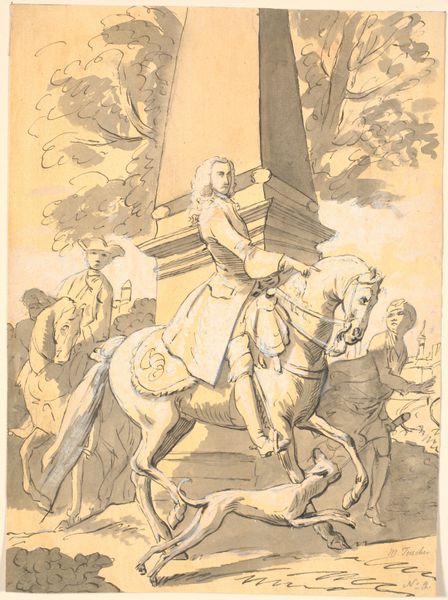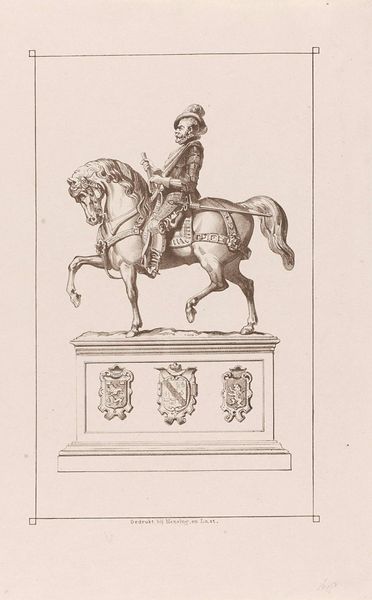
Dimensions: height 883 mm, width 628 mm
Copyright: Rijks Museum: Open Domain
This is Johann Martin Preissler's "Equestrian statue of Frederick V of Denmark," an engraving. It is a study of Jacques Saly’s equestrian statue of King Frederick V, a public monument erected in Copenhagen in 1771. Here we see the King depicted heroically on horseback, adorned in classical garb, meant to evoke ideals of enlightenment and power. But how might the Danish people have reconciled this depiction with the realities of his reign? Frederick V, while remembered as a patron of the arts and sciences, also oversaw a colonial administration marked by exploitation and the transatlantic slave trade. Engravings like this one were often commissioned by the royal court as a form of propaganda, intended to legitimize the rule of the monarchy and project an image of strength and stability. However, we might reflect on the emotional and personal dimensions of viewing such a work today, given our heightened awareness of historical injustices. Do these images of power still resonate, or do they now evoke a more complex narrative, one that includes the voices of those who were marginalized and oppressed?
Comments
No comments
Be the first to comment and join the conversation on the ultimate creative platform.


